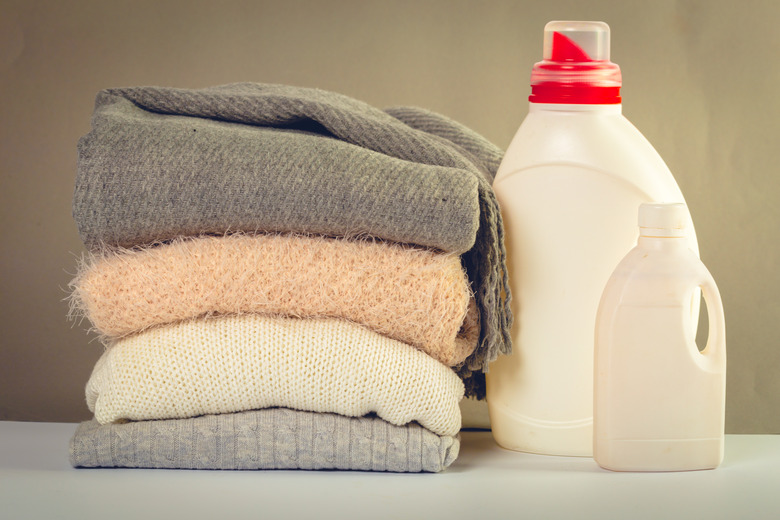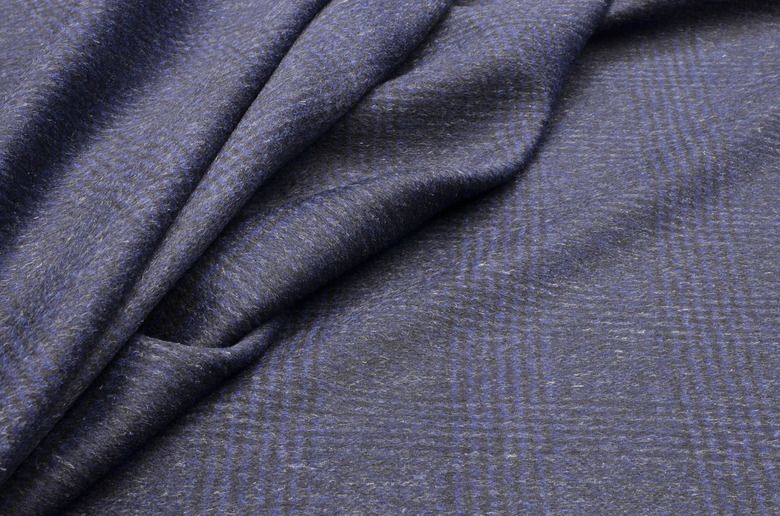How To Wash Cashmere
The word "cashmere" evokes a sense of luxury and exclusivity, thanks in part to this fiber's rarity and incredibly soft feel. Unlike other wools, cashmere's fibers are fine enough that they don't cause that wool-sweater itch. Just like most wool, however, cashmere requires a bit of extra care when washing to ensure it doesn't shrink, pill or warp.
Cashmere, By Definition
Cashmere, By Definition
Cashmere comes from goats bred specifically for the fine, furry fibers of their undercoats. These goats usually live in areas of extreme climates with harsh winters, such as Mongolia. Cashmere wool, or technically goat hair, is the finest fiber from the Cashmere goat's neck. One goat produces only a few ounces of cashmere fiber per year, hence the reason cashmere goods are so expensive compared to similar items made from other forms of wool such as merino, camel, sheep or alpaca. The production process also involves separating the finest undercoat hair from thicker portions of the goat's hair, which also increases the cost.
Washing Cashmere By Hand
Washing Cashmere By Hand
Thanks to the fine-spun fibers, cashmere is ideal for hand washing; it may even get softer as time goes on, as long as washed properly.
- Turn cashmere garments inside out before washing.
- Place the cashmere in a clean bucket or plastic tub of cool water, using a small amount of a detergent designed for wools or delicates, following the recommendations on the detergent bottle. In a pinch, a few drops of baby shampoo will work in place of detergent, as the fiber is hair, after all.
- Swish the material around gently, then let it soak for five minutes or so.
- Empty the water, then refill the tub with clean, cool water. Swish the cashmere again to ensure no soap bubbles arise, otherwise rinse it again.
- Empty the water yet again, then set the cashmere atop a white towel, folding the towel gently or pressing another white towel atop the wool to absorb water.
- Dry the cashmere flat on a fresh white towel or drying rack. Drying it on a clothesline or hanger may cause it to warp.
Machine Washing Cashmere
Machine Washing Cashmere
If the care tag indicates the cashmere is machine washable, select the gentlest cycle and cool water. Anything other than a gentle cycle may cause the fabric to felt or pill. Placing the item in a mesh laundry bag also helps prevent snags and pilling. Use a small amount of detergent designed for delicates, as you would when hand-washing the wool. Dry the item by blotting it with towels, then let it air dry on a flat rack or atop a fresh white towel. Colored towels may bleed color onto the wool.
Dealing with Blends and Other Wools
Dealing with Blends and Other Wools
Most wool wear is safe to wash following the same cashmere care instructions, unless the care tag indicates "dry clean only." Wash other wool blends as you would cashmere, or follow the care tag's instructions. Some wool blends are a bit more durable than others. Anything with wool in it could shrink if washed or rinsed in water that's too hot, or if the rinse and wash temperatures vary greatly. Air drying flat, out of direct sunlight, is always a safer option than the dryer.
Spot-Treating Stains
Spot-Treating Stains
For fresh stains such as foods or drinks, blot up as much as possible with a white cloth. Dab a small amount of cool water on the spot, then blot some more. A drop of baby shampoo gently rubbed into the stain with your fingers can help loosen most types of stains. Otherwise, try a stain-treatment bar designed specifically for wool, then wash the cashmere as described above.
Storing Cashmere Apparel and Accessories
Storing Cashmere Apparel and Accessories
While it may be tempting to hang a cashmere sweater up in the closet when you're not wearing it, this isn't a good idea. Hangers tend to leave marks in the shoulders of wool sweaters—or just about any sweater, for that matter. Wool also easily distorts. Fold sweaters and scarves up to store them in an area out of direct sunlight. Continual exposure to sunlight could cause fading, as is the case with many other dyed natural fibers.
References
- Slate: Why is Cashmere More Expensive Than Other Types of Wool?
- Sierra Trading Post: How to Choose Between Cashmere and Merino Wool
- Discover: 20 Things You Didn't Know About Wool
- Bloomberg: How Your Cashmere is Made
- Luca Faloni: All You Need to Know About Cashmere
- GQ: The GQ Guide to Washing Your Cashmere Sweater



